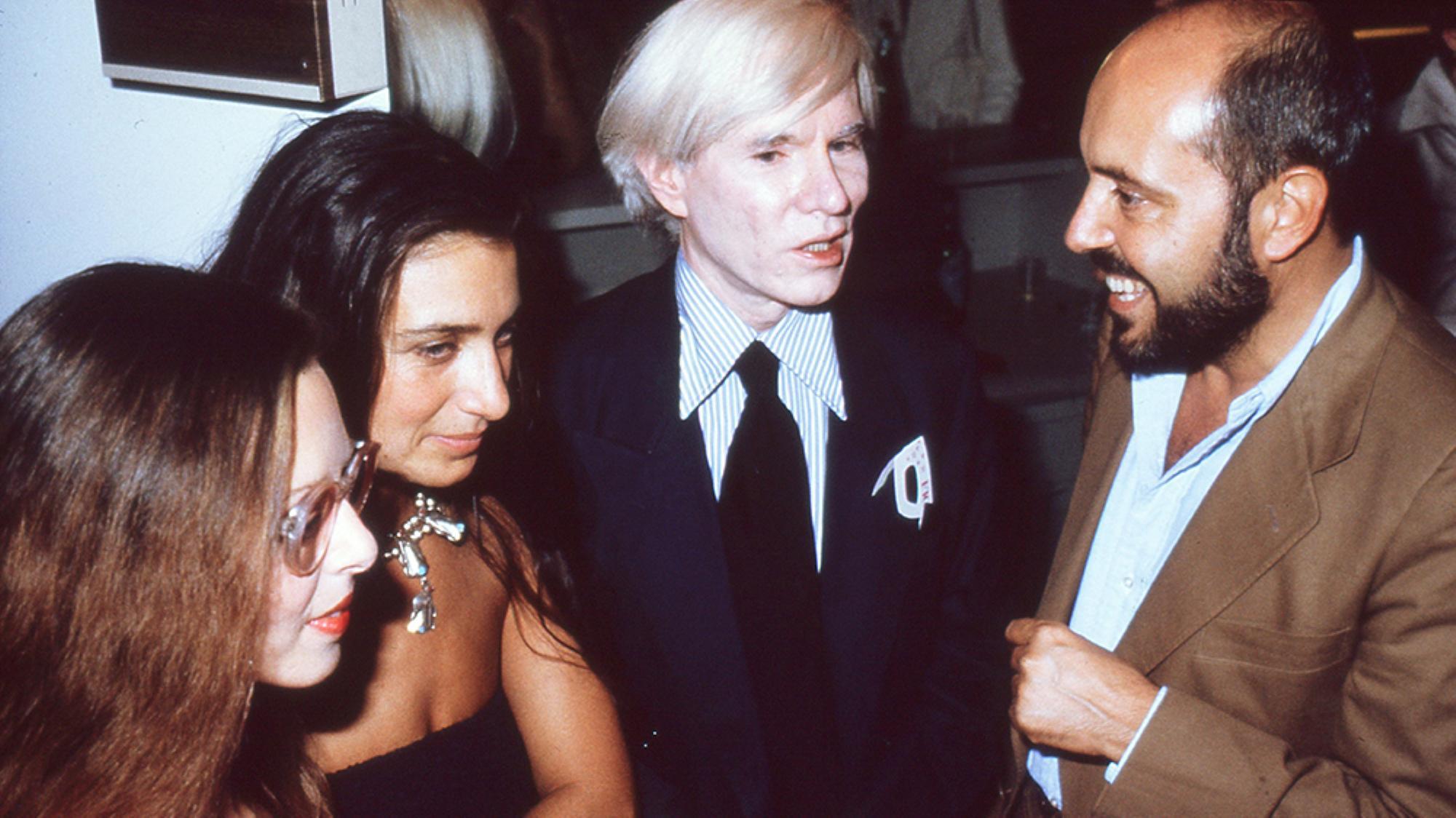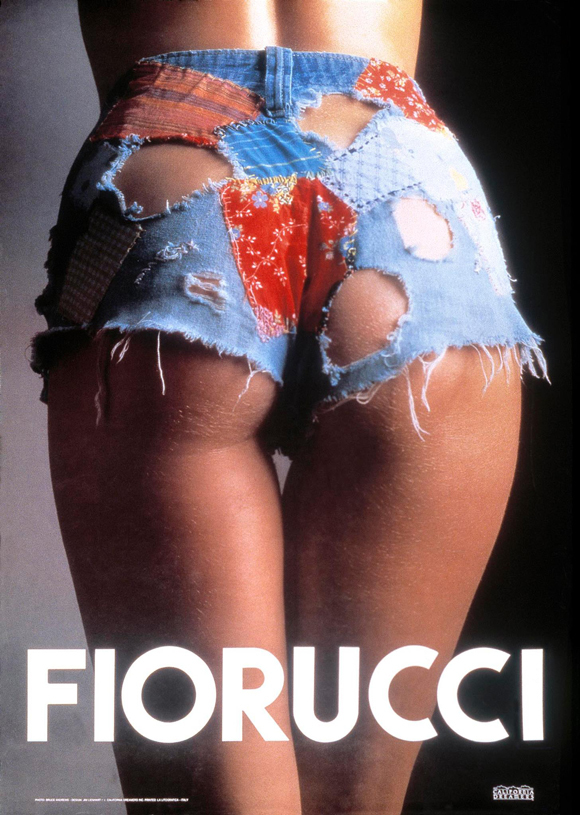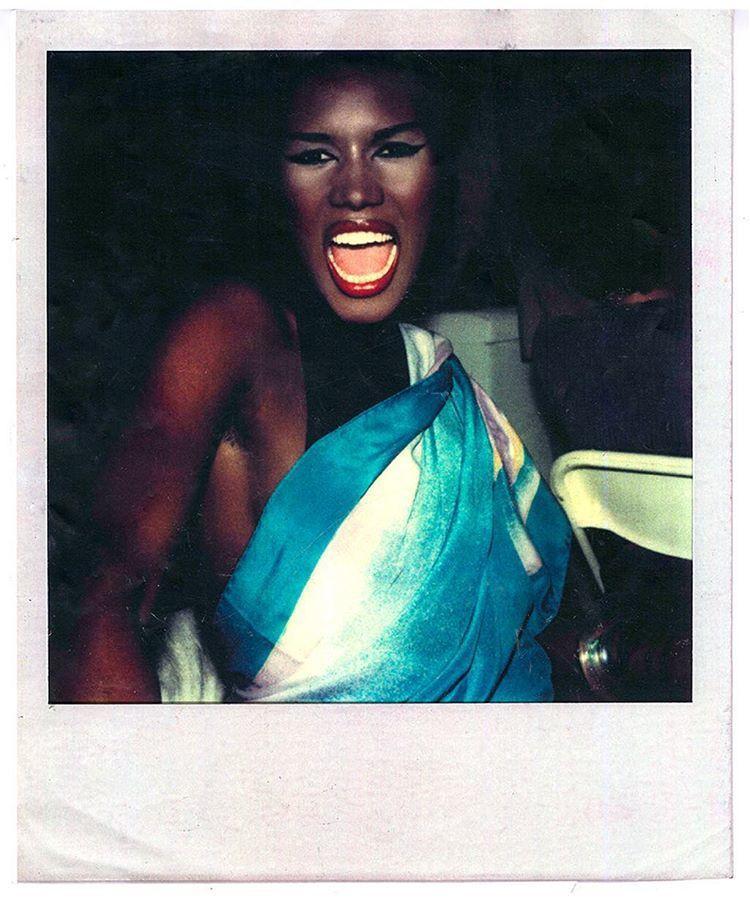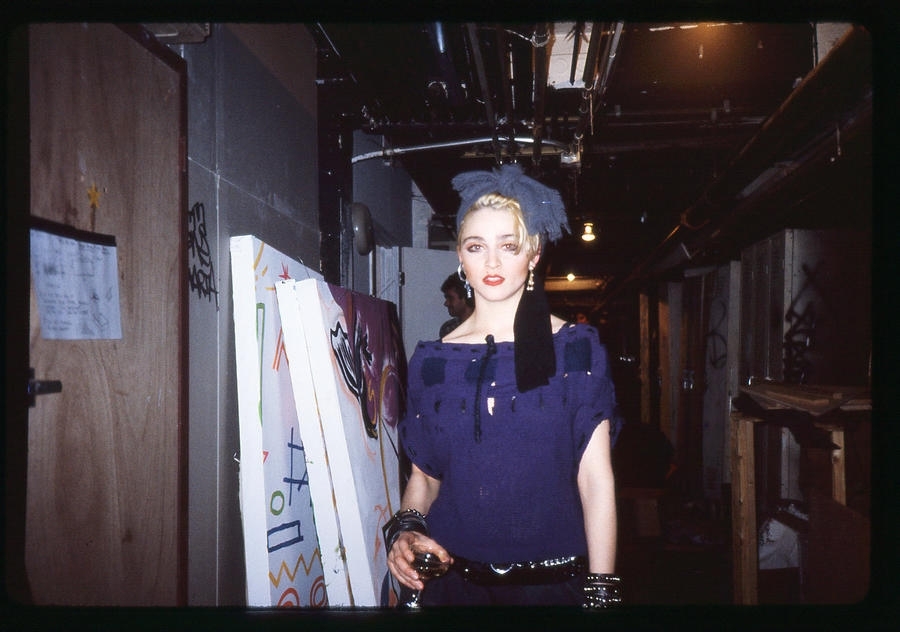Elio Fiorucci, the son of a Milanese shoe shop owner, was inspired one grey day in 1962 to create a few pairs of brightly colored rubber galoshes. He took them down to the offices of a local fashion rag, which snapped them. Elio’s brightly colored rubber galoshes caused a street style storm.
After a trip to London, he opened a shop in Milan, selling the swingingest fashions from the likes of Ossie Clark and Zandra Rhodes to Milan’s swingingest customers. The rest, as they say, was a totally major moment in fashion history. And what a colorful, crazy, controversial history. Here’s the rest of the best of it.

Fiorucci’s fashion was the fashion of the 70s and 80s.
Leopard print. Bright colors. Jumpsuits. Fishnets. Spandex. Militaria. The Memphis Group. Blue jeans. Afghan coats. The thong. Thank you Elio! He encapsulated the empowered futurist sexiness of the 80s and the powerful disco sexiness of the 70s. Not an easy feat, but a feat he managed easily.
He was the first to spot Madonna.
In 1983 Madonna made her debut public appearance at a Studio 54 party organized by Fiorucci to celebrate the 15th anniversary of his label. He’d come to New York in the mid-70s, opening a store on East 59th at the height of disco. It was so much the height of disco, and Fiorucci was so much the height of fashion disco, that the Fiorucci shop became the daytime Studio 54. It was New York. Or at least the kind of New York you wanted to be a part of. It attracted everybody. Andy Warhol, in a diary entry, wrote: “Went to Fiorucci and it’s so much fun there. It’s everything I’ve always wanted, all plastic.”
So it makes sense that he’d discover Madonna hanging around the shop right? Her brother was working there, and of course, it’s Madonna, you’re gonna notice her, how can you not. You’re gonna put her on stage, with her dancers. You’re Fiorucci, you’re making history.

Fiorucci is the reason your butt looks amazing in jeans.
“It became one of my obsessions: this idea that women should not wear jeans made for men, but should have their own,” he said in an interview with i-D just before he died. “Once I returned to Milan I bought a roll of denim, a shrinking, elastic fabric. It became our greatest success. All women lined up to buy our jeans, they wanted to show off their legs while keeping them covered. Feminine beauty must be preserved. Nature is awareness and awareness of eroticism is one of the greatest things in life. Sex, affection, falling in love, adoration—they are the important things.”
And part of the reason you’re reading this very magazine.
In the early 80s, i-D’s Founder Terry Jones was moonlighting for Fiorucci as art director, as well as creating some of the most era-defining, youth-quaking fashion publishing for i-D. He is creator of those Fiorucci Panini sticker designs that we know and love and which define the brand and are all over the new website. And plenty of those advertisements too. You know the ones. What else is there to say about them? Except without Fiorucci’s backing, i-D might not have survived.

And maybe he invented the concept store too?
DSM, Colette, 10 Corso Como, eat your heart out. Fiorucci’s stores in Milan, NYC, and London defined the concept store. Fiorucci clothes. Memphis Group furniture. Collaborations with artists and musicians and designers. They were stores you wanted to hang out in, discover new things in. Fiorucci brought the humble haberdashery into the 21st century.
What about the collectible football kit? Yeah, Fiorucci invented that.
Is there actually anything Fiorucci didn’t invent or pioneer? In the early 90s Fiorucci was the sponsor of Italian Series A side Inter Milan, splashing its logo across the chests of such footballing greats at Dennis Bergkamp, Walter Zenga, Matthias Sammer, and Jurgen Klinsmann. Get on eBay and get bidding and buy one. A little piece of fashion and football history for all you people who like your fashion and football to come together.

How about this tenuous list of things off the top of our heads that wouldn’t have existed if Fiorucci hadn’t existed?
D&G? Milan being cool? Those Paninaro kids? That Pet Shop Boys song “Paninaro”? Disco fashion being good? Palace‘s cheeky attitude? Mark Leckey? Madonna? Madonna on the cover of i-D? i-D? Aries? Fashion brands with decent advertising that’s not just recycled campaign shots? All things that owe some kind of debt to the things Elio pioneered? We could carry on. There’s plenty more.
Fiorucci taught us all to love ourselves, naked like the day we were born.
Let’s leave you with one more quote from Elio himself. “We are born naked, all dressing is hypocrisy,” he said in that same late interview. “A man in a tuxedo can be vulgar. A naked woman is a creature of God. I still remember when the police stormed into my office to seize the stickers for the monokini campaign. In my life I have always tried to free the naked body from vulgarity.”
Read: Fiorucci made me hardcore — check out our interview with the Italian fashion legend in 2015.
Credits
Text Felix Petty
Photography from the Fiorucci archives
